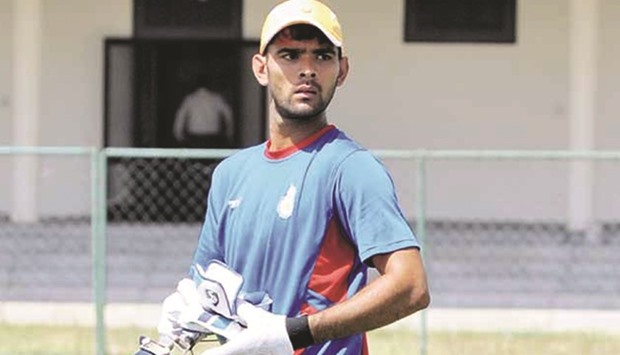His world-first 300-run knock in a Twenty20 match at a suburban Delhi cricket ground has become a global sensation, but Mohit Ahlawat is still a little bemused by the attention. It isn’t the first record-breaking score the 21-year-old has posted in the game’s shortest form.
“In the last tournament I played in the Delhi district league I scored 224 not out,” he says. In another recent tournament, in Ghaziabad, he posted a casual 139.
The first of those easily eclipses the current professional record of 175 not out, scored by the West Indies’ Chris Gayle in an Indian Premier League match in Bangalore in 2013.
Hitting mammoth scores—last Tuesday, 300 runs off just 72 balls, including an astonishing 39 sixes—has become routine for the student from Panipat, a rural district of Haryana state about 85km (53 miles) north of Indian capital Delhi.
“I didn’t think I’d get so much media coverage,” he says. “It feels great, all the news channels have come to the ground to interview me.”
The softly-spoken batsman and wicketkeeper says his secret is quickly finding his flow. “I wasn’t nervous,” he says, entering the final over on 266 runs, seeing a triple century in sight. “I was just cool,” he adds with a laugh. “I thought I could do it. I told myself: just try to hit it on time. I try to enjoy my batting, try not to think too much.”
The scorecard tells the tale of that final over: 4, 6, 6, 6, 6, 6. The ground in East Delhi is particularly small, but this time his total was enough to put Ahlawat on the radar of the Delhi Daredevils, the Indian Premier League side that called him up for a trial after news of the knock spread.
Should he be selected in upcoming player auctions, Ahlawat will be playing on pitches and in front of crowds a universe away from the patches of grass in Panipat where, growing up, he and his friends would play cricket each Sunday.
“It wasn’t a cricket ground,” he says. “But every Sunday the kids used to call me to play, and my father bought me a cricket kit, so I started playing with that.”
People in the town noticed his talent. “Everyone used to say I was quite a good player, that I played a bit differently,” he says, but his big-swinging style also needed tempering before he could face better quality bowlers.
“When I was a kid, I didn’t really know how to hit the ball in the right way. I’d get out a lot,” he says.
Like so many young Indians in the rapidly urbanising country, at 17, Ahlawat moved to the city chasing bigger opportunities.
“My father told me it was better I go and join a club in Delhi, that I won’t be able get anywhere in cricket from Panipat,” he says.
Alongside his studies at Delhi University, he joined one of the city’s most esteemed cricket clubs, the LB Shastri Cricket Academy. There he was coached by Sanjay Bhardwaj, who also oversaw the international career of former Indian opener Gautam Gambhir.
Bhardwaj told Indian media he was delighted by Ahlawat’s achievement. “He hasn’t had anything easy in life. He is a farmer’s son and has had to struggle to follow his dream of playing cricket,” he said. “I am very happy that the Daredevils took note of his knock and called him for trial.”
Ahlawat is facing his sudden surge of fame the same way he does bowlers: coolly, focusing on one ball at a time. “I haven’t really thought about the future,” he says. “Last year I was dropped from the Delhi team for the Ranji Trophy after only three matches. I was lacking confidence. Maybe now they’ll take me back?”

Mohit Ahlawat
